Black beard in an aquarium: what is it, why does it appear and how to get rid of it?
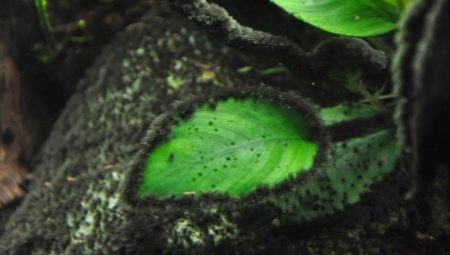
Many aquarium owners are faced with a black beard. It is a problem for an artificial ecosystem, but there is nothing terrible in it. However, people should remember that it will take a lot of effort, knowledge and time to eliminate algae.
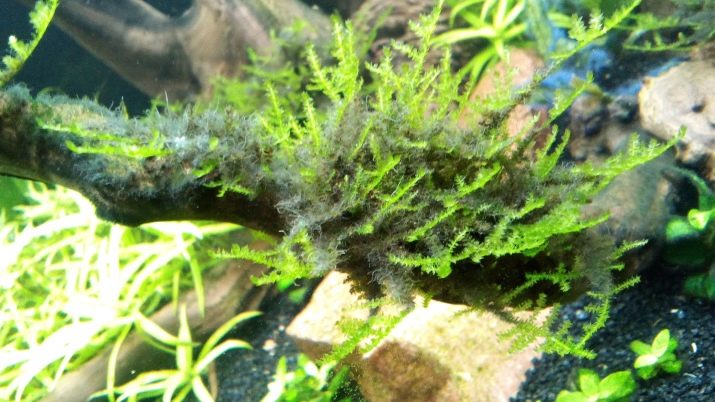
Description
Blackbeard is a specific red alga that belongs to the sub-kingdom of the Bagryanka, it was brought from the southeast of Asia. The plant looks like black filamentous moss. The alga has the ability to cover an aquatic plant that grows slowly using it as a substrate. A black beard not only looks unattractive, but also harms the rest of the flora in the aquarium. Algae obscures leaf plates and destroys tissue. In addition to plants, an aquarium inhabitant is able to settle on snags, soil, and even decorations.
The height of this representative usually reaches 5 centimeters. This plant is characterized by a high rate of reproduction and growth, which is quite dangerous for aquarium plants. Algae does not harm animals that live in this artificial ecosystem.
This underwater representative of the flora is not a parasite, since it carries out its vital activity by absorbing organic matter in the water.
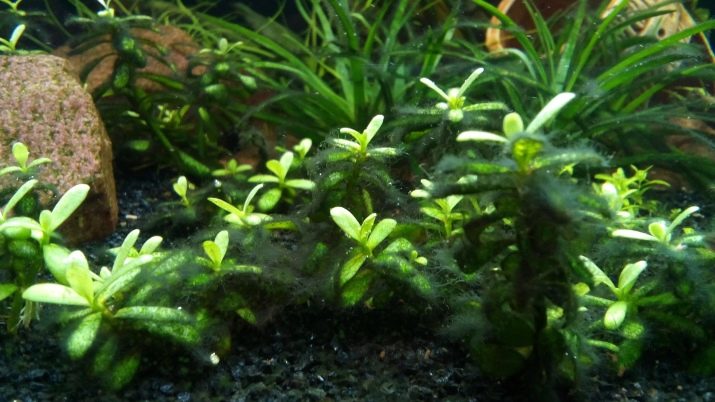
How is it different from a flip flop?
Purple, Vietnamese, black beard, antler belong to the general group of underwater plants, which have the same nature of occurrence and a slight difference in structure.Since the appearance of these algae is similar, and people also confuse them with each other, irreversible consequences arise after fighting them. A black beard looks like brushes, which consist of tough threads that are painted in dark shades: from green to black. It mainly grows on vegetation, soil and artificial objects in the aquarium, while harming it.
Vietnamese is presented in the form of strings that are collected in a bundle and grow from one point. The color of this algae has various shades of green.
The main difference between a flip-flop and a black beard is that it affects only plants. If a flip-flop is immersed in acetone, its color will turn red, which cannot be said about a black beard.
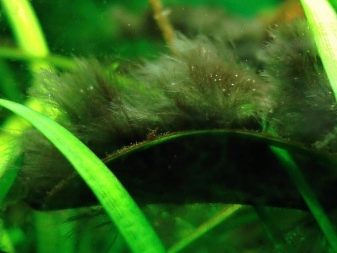
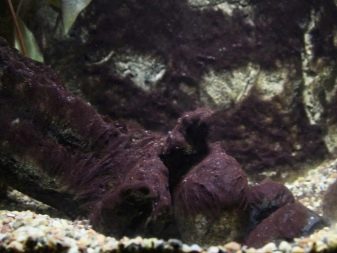
What is the danger?
The black beard is not a parasite as it does not harm the animals in the aquarium. This alga can harm green underwater vegetation, ornamental plantings, especially sluggish ones. The black beard grows and covers the foliage of the plant, while relieving it of the necessary amount of light.
Thus, representatives of the flora grow poorly, develop and eventually die. If it covers the soil with a large layer, water circulation will be disrupted and the substrate will acidify.
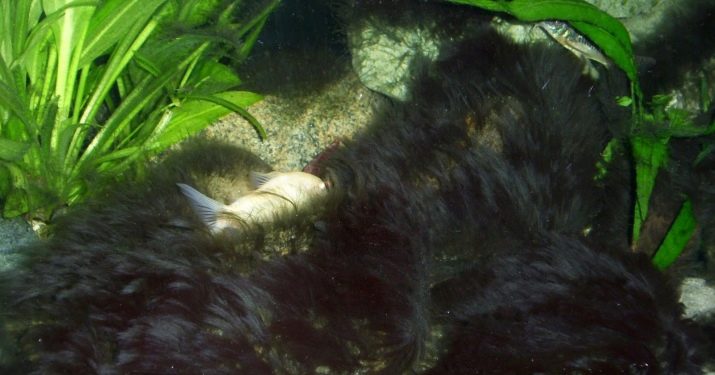
Reasons for the appearance
When a black beard appears in the aquarium, then you should think about the reasons for its spread. The main reasons why this algae may appear in a new or old aquarium are as follows:
- infrequent water changes - in aquariums, due to rare cleaning, substances in the form of nitrates, phosphates accumulate, which cause the spread of algae;
- insufficient illumination - if the lamp has not been changed for a long time in an artificial ecosystem, then it shines dimmer; as you know, dim lighting is the best environment for algae growth;
- excess food in fish - since a black beard is food for many species of fish, with a large amount of food coming from the external environment, they will simply stop eating algae;
- too many fish in the aquarium - from the overpopulation of the ecosystem, the production of nitrates and phosphates occurs;
- accumulation in the substrate - if there is a strong filtration in the aquarium or large fish are excessively digging through the soil, then the remains of biomass are able to rise to the soil surface; in this case, the algae that was hidden receives a favorable environment for reproduction and growth;
- resettling plants or decoration items that were previously infected - on snags, stones, plants, there may be black swaying villi, which are a black beard.
Important! If algae appears on the surfaces and vegetation of the aquarium in the form of black-green fluffy shoots, this is a black beard. Over time, the volume of the lesion increases, turning into a dark carpet.
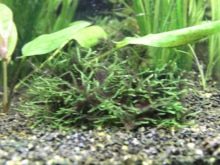
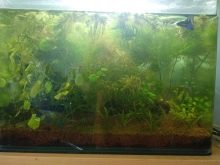
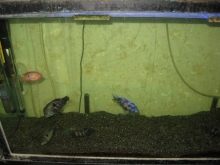
Means to fight
If the black beard has already attacked the aquarium, it is worth getting ready to fight it. Various drugs and chemicals can be used to eliminate adversity. Algicides are a quick fix for this problem, but they are not always safe. When choosing chemical-based drugs, you should take the process responsibly.
To minimize the danger from the use of algicides, you should carefully read the instructions... It is worth remembering that a product containing copper sulfate can harm invertebrates such as crayfish, shrimp, snail, as well as many plants and animals.
The safest substances include those that contain monolinuron and glutaraldehyde. They can be in liquid, tablet form. When using these drugs, the black beard will begin to fade as early as 3-4 days.
Furacilin, sidex, antibiotics and hydrogen peroxide are also used to clean the aquarium of unwanted algae.During the application of chemicals, it is worth carrying out the deposition of fish and other living creatures. After the process is over, it is worth replacing the water in the aquarium.

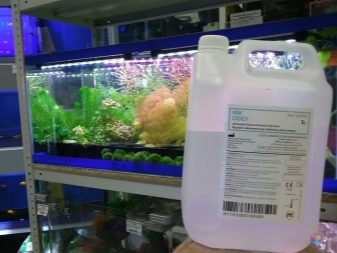
The safest options for eliminating black beard using chemicals include baking soda. It should be added to the aquarium in a volume of 1 gram per 5 liters of water. Soda is able to change the pH level habitual for algae, from which the black beard will die. Before using this method is clarify the tolerance of soda by other inhabitants of the ecosystem... And also in the store you can buy Algimin, after using which the black beard will stop growing and subsequently die.
One of the most powerful and effective remedies for black beard, flip flops can be called "Antiborodin". This drug can be called effective and at the same time safe. With its help, unwanted algae in the aquarium is destroyed quite quickly. The good effect of Antiborodin is based on the presence of glutaraldehyde in it. This remedy destroys black beard and its relatives at the cellular level.
The absence of additives and impurities does not upset the balance in the aquarium system. The drug eliminates algae at any stage of its development, thereby preventing its re-growth.
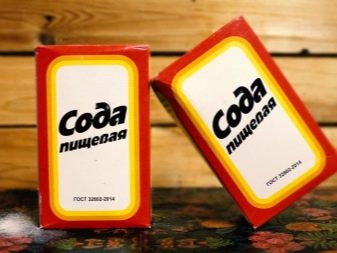
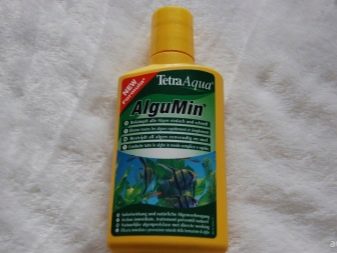
Removal methods
In some aquariums, a black beard becomes a real problem for its inhabitants. So that there are no difficulties when you want to get rid of algae, it is worth taking proper care of the artificial ecosystem. Wherein no need to overpopulate the aquarium, prevent the accumulation of a large amount of organic matter, do not overfeed the inhabitants.
In a situation where the compsopogon has already begun active life, it is worth removing fish from the ecosystem for a while, limiting the circulation of fluid. Thanks to these measures, the algae will stop eating organic matter and begin to suffer.
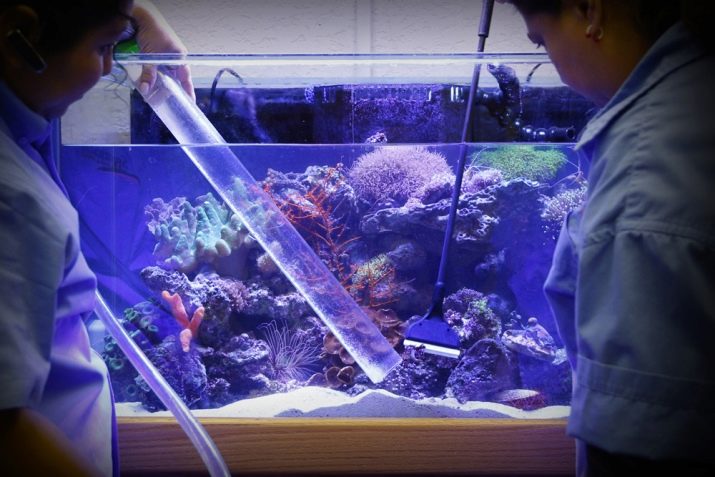
Biological Techniques That Help Destroy Black Beards.
- Adding Siamese algae eater, loricaria catfish, girinoheilus to the aquarium. These types of fish are highly effective in the desire to remove black beard and flip flops. Best of all, the above living organisms cope with their task on an empty stomach, so it is better to underfeed them.
- The use of young ampullaries. They effectively feed on the Audocinella fouling.
- Planting plants, which are characterized by the rapidity of growth, for example, vallisneria, kabomba, elodea, hornwort.
- Acquisition of cladophora... This is an interesting type of algae that looks like a fluffy ball. She is able not only to decorate the aquarium, but also to compete with other unwanted vegetation. Cladophora absorbs a large percentage of nitrites, nitrates, phosphates, which the black beard feeds on.
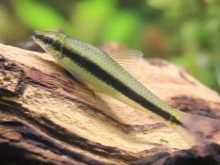
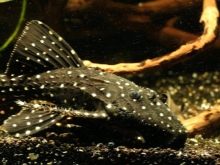
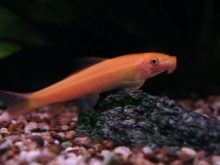
The second option for cleaning the surface of unwanted algae is to restart the aquarium. To clean the container, you will need to do the following:
- transplant fish into another container with water;
- remove decorative elements, vegetation from the tank, drain the water along with the substrate;
- disinfect the aquarium and decorations with a manganese solution, hydrogen peroxide or boiling water;
- the soil should be calcined in the oven or treated with boiling water;
- vegetation needs to be processed and quarantined;
- make a launch of the aquarium.
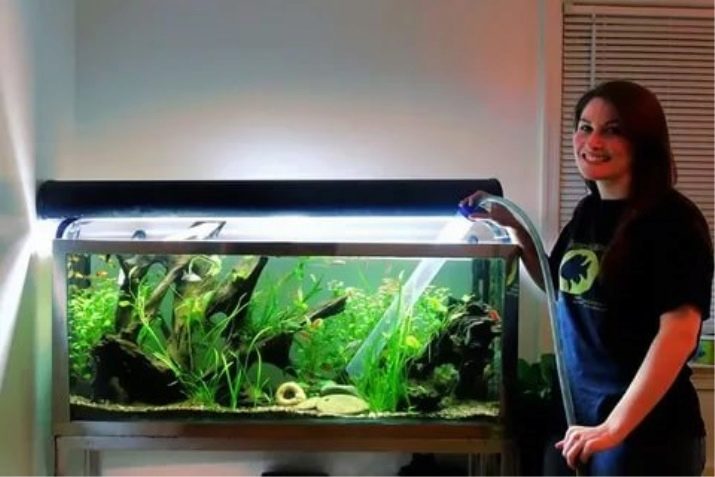
The use of a battery helps to fight a black beard. This method does not imply resettlement of residents. Copper wires are drawn from the contacts, which are lowered into the aquarium for two days. The influence of the microcurrent will not negatively affect the living creatures of the ecosystem, but the black beard will certainly die.
Prophylaxis
There is nothing complicated at the heart of preventive measures regarding the appearance of a black beard, namely:
- regular cleaning of the aquarium;
- feeding the fish in the amount that they can eat in a matter of minutes;
- refusal to overpopulate the ecosystem with fish;
- the use of preparations for feeding strictly according to the instructions;
- settling in the aquarium of living organisms that eat algae;
- the water temperature indicator should not exceed 26 degrees Celsius;
- with strong aeration, it is recommended to install a filter in the form of a flute or rain;
- do not allow direct sunlight to enter the ecosystem.
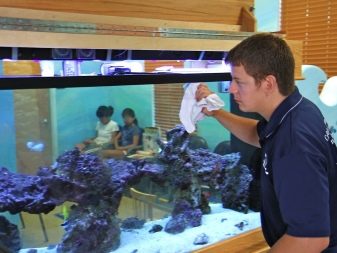

Vegetation that has just been purchased and is planned to be planted in the aquarium must be treated with hydrogen peroxide. This activity helps to clear up spores. Algae are part of the ecosystem, so don't panic when you find a black beard in your aquarium. It is necessary to determine the reason for the appearance of this vegetation and, using the above methods, remove it from the ecosystem.
Next, how to get rid of the black beard in the aquarium.








